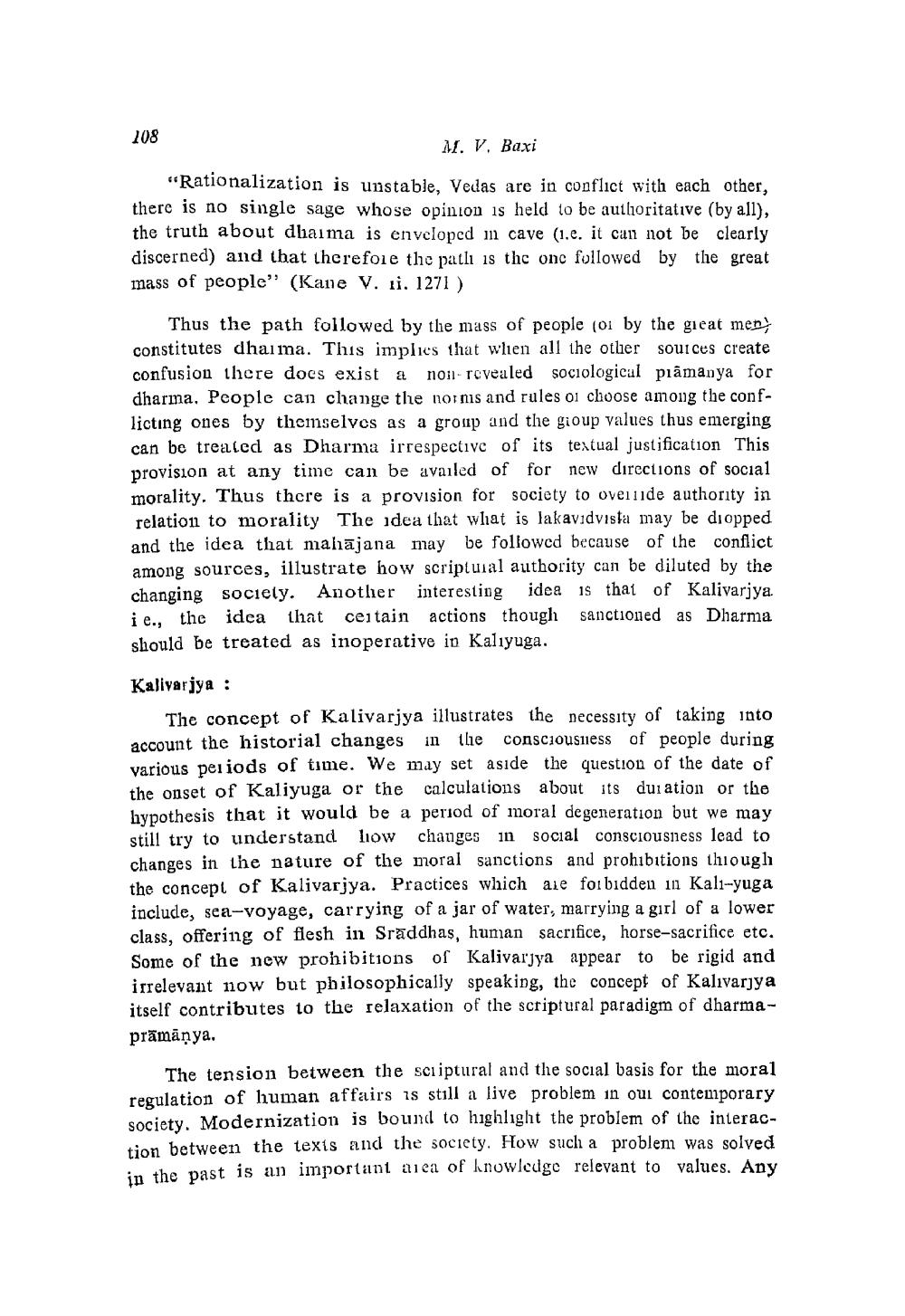________________
208
M. V. Baxi
"Rationalization is unstable, Vedas are in conflict with each other, there is no single sage whose opinion is held to be authoritative (by all), the truth about dhaima is enveloped in cave (1.e. it can not be clearly discerned) and that therefore the patli is the one followed by the great mass of people” (Kane V. 11. 1271 )
Thus the path followed by the mass of people (ou by the great med constitutes dhaima. This implies that wlien all the other sources create confusion there docs exist a nonrevealed sociological prāmanya for dharma. People can change the nornis and rules oi choose among the conflicting ones by themselves as a group and the group values thus emerging can be treated as Dharma irrespective of its textual justification This provision at any time can be availed of for new directions of social morality. Thus there is a provision for society to oveunde authority in relation to morality The idea that what is lakavidvista may be diopped and the idea that malājana may be followed because of the conflict among sources, illustrate how scriptual authority can be diluted by the changing society. Another interesting idea is that of Kalivarjya i e., the idea that ceitain actions though sanctioned as Dharma should be treated as inoperative ip Kaliyuga.
Kalivarjya :
The concept of Kalivarjya illustrates the necessity of taking into account the historial changes in the consciousness of people during various periods of time. We may set aside the question of the date of the onset of Kaliyuga or the calculations about its duration or the hypothesis that it would be a period of moral degeneration but we may still try to understand low changes in social consciousness lead to changes in the nature of the moral sanctions and prohibitions through the concept of Kalivarjya. Practices which are forbidden in Kalı-yuga include, sea-voyage, carrying of a jar of water, marrying a girl of a lower class, offering of flesh in Sraddhas, human sacrifice, horse-sacrifice etc. Some of the new prohibitions of Kalivarjya appear to be rigid and irrelevant now but philosophically speaking, the concept of Kalivarjya itself contributes to the relaxation of the scriptural paradigm of dharmaprāmānya.
The tension between the sciiptural and the social basis for the moral regulation of human affairs is still a live problem in our contemporary society. Modernization is bound to highlight the problem of the interaction between the texts and the society. How such a problem was solved
the past is an important area of knowledge relevant to values. Any




